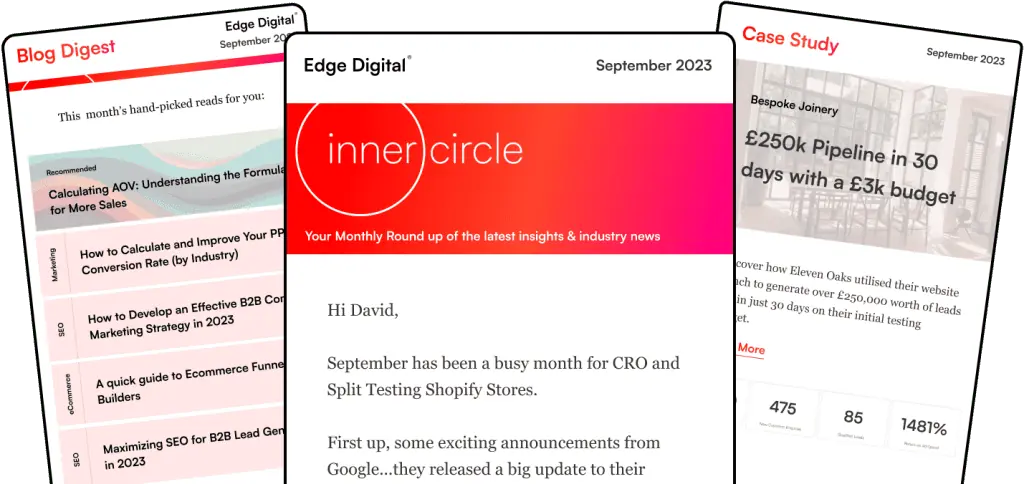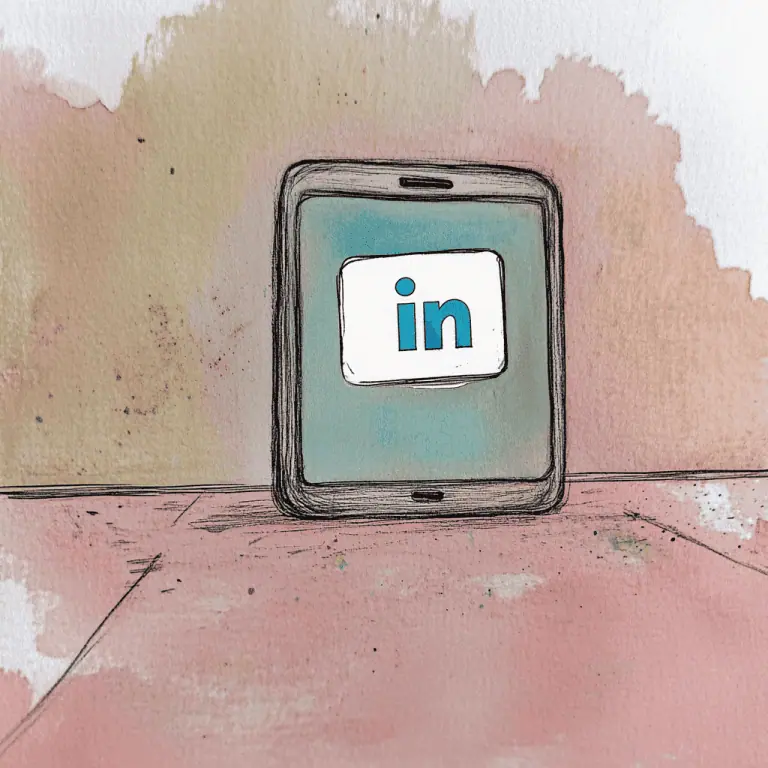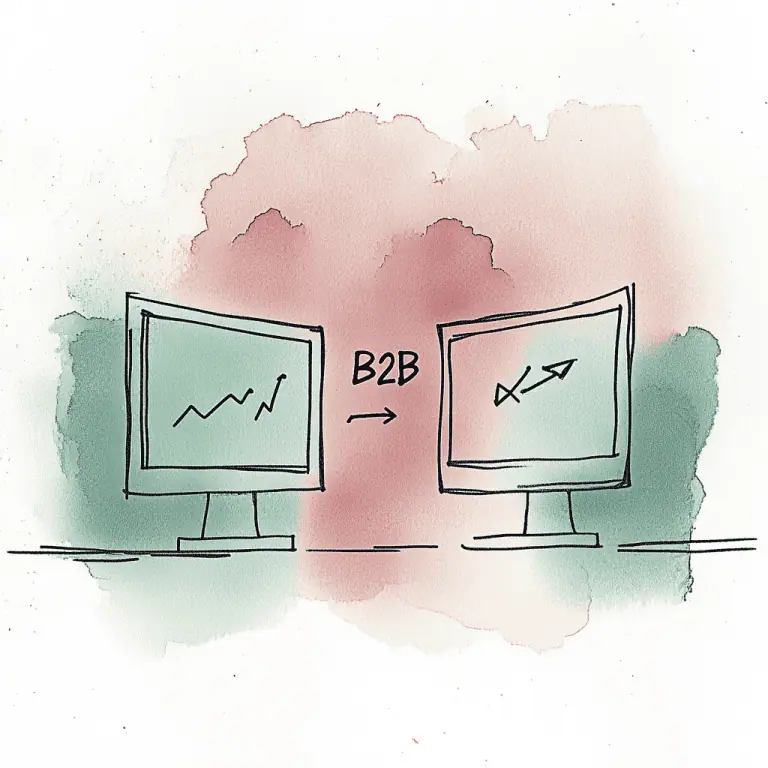Do you feel like your B2B copywriting skills could use a boost? You’re in the right place! In this comprehensive guide, we’ll explore battle-tested strategies for successful B2B copywriting that will help you create compelling content, engage your target audience, and drive results. Understanding the business audience is crucial to ensure your unique selling proposition is clear and easily grasped. Get ready to elevate your copywriting game to new heights!
Key Takeaways
B2B Copywriting is the act of creating persuasive content for businesses to generate awareness, establish authority and influence decision-makers.
Key differences between B2B & B2C copywriting include reliance on facts/logic vs emotional connection & persuasive language.
Crafting compelling headlines, utilizing storytelling techniques & leveraging active voice are key strategies for successful B2B copywriting.

create captivating and persuasive writing for business’
Understanding B2B Copywriting
Business to business copywriting is the art of crafting compelling content for businesses that offer services to other businesses, emphasizing solving problems and providing solutions. Writing copy for B2B involves creating content for websites, mobile applications, social media advertisements, and landing pages. It plays a pivotal role in content marketing, helping businesses generate awareness, establish authority, and persuade decision-makers to take action.
There are some key differences between B2B and B2C copywriting. Here are a few:
B2B copywriting focuses on logical factors and decision-makers
B2C copywriting targets emotions and individual customers
B2B copywriting is more focused on website content and email marketing campaigns
B2C copywriting often includes social media posts and other consumer-focused content
The Role of B2B Copywriting in Content Marketing Strategy
B2B copywriting significantly contributes to content marketing; it aids businesses in enhancing brand recognition, capturing leads, and showcasing expertise. A comprehensive understanding of the industry, incorporating informative and personalized content, and developing a brand story are essential for successful B2B marketing.
Keeping pace with industry trends and generating content that strikes a chord with the target audience can amplify a business’s overall success through B2B copywriting.
Key Differences Between B2B and B2C Copywriting
In B2B copywriting, the primary focus is on establishing trust with a select group of leads and using terms that the target audience is familiar with, as seen in website copy and email marketing campaigns. On the other hand, B2C copywriting aims to appeal to individual consumers by emphasizing the advantages and personal needs or desires.
B2B copywriting generally employs facts and logic with a more concise and formal tone, while emotional appeal and creating a connection with the audience are more commonly used in B2C copywriting.
Identifying Your Target Decision-Makers
It’s vital in B2B copywriting to identify and comprehend your target decision-makers. Engaging prospective customers is crucial as it helps in building relationships with individuals who have the potential to become future customers. Conducting research on your target audience ensures that your content is tailored to their needs and interests, ultimately increasing the chances of converting them into customers.
Focusing your copywriting efforts on decision-makers ensures your content reaches those who have the final say on purchasing your product or service, thereby enhancing your content’s influence.
Conducting Market Research
Conducting market research is fundamental for collecting relevant information about your target audience, including their needs and preferences. Here are the steps to follow:
Define research objectives
Select research methods
Collect and analyze data
Identify customer pain points and needs
By following these steps, you can develop a comprehensive understanding of your audience and create content that resonates with them.
Staying up-to-date with industry trends and conducting competitor analysis will also help you refine your B2B copywriting strategy and create content that stands out.
Creating Buyer Personas
The development of buyer personas proves invaluable in customizing your content to align with your target customers’ needs and preferences. By developing comprehensive profiles of target decision-makers, you can create more personalized and targeted content that speaks directly to the individuals who will ultimately decide whether to purchase your product or service.
This targeted approach not only increases the effectiveness of your B2B copywriting but also helps build trust and foster a stronger connection with your audience.
Crafting Compelling Headlines
Creating engaging headlines is vital in B2B copywriting as it attracts attention and encourages audience engagement. A successful headline:
Concisely conveys the value of the product
Entices readers to learn more and take action
Uses action words and emotional triggers to make it more impactful and persuasive
By using these techniques as part of your content marketing strategy, you can attract leads by drawing in your target audience and increase the overall effectiveness of your content.

Capturing through enticing and interesting headlines
Using Action Words and Emotional Triggers
The use of action words and emotional triggers can effectively create headlines that touch your audience and motivate them to take action. Incorporating these elements into your headlines can effectively capture the reader’s attention, evoke emotions, and create a sense of urgency, leading to increased engagement and conversions.
Choose words that evoke the desired emotions and trigger a fear of missing out, ensuring your headlines are as compelling and persuasive as possible.
Testing and Optimizing Headlines
The act of testing and refining headlines is essential to enhance their efficacy and the overall performance of your content. By conducting A/B tests on different headlines, you can determine which version resonates best with your target audience and use this information to optimize your copywriting strategy.
This process not only helps improve search engine rankings but also increases click-through rates and user experience, maximizing the impact of your B2B copywriting.
Focusing on Benefits Over Features
In B2B copywriting, emphasis should be placed on the advantages of your product or service, rather than solely on its features. By showcasing real-world results and incorporating testimonials and case studies, you can demonstrate the value of your offering in a tangible way, ultimately leading to increased conversions and customer satisfaction. Incorporating customer testimonials can help demonstrate the value of your offering.
This approach also helps to build trust and foster a stronger connection with your audience, setting the stage for a lasting business relationship.
Showcasing Real-World Results
Showcasing real-world outcomes in your B2B copywriting supplies concrete evidence of the advantages your product or service delivers. By sharing the success stories of other customers who have experienced positive outcomes from using your product, you can:
Build credibility and trust with your audience
Help them envision the results they could achieve
Make your copy more persuasive
Establish your brand as a reliable and effective solution provider
Incorporating Testimonials and Case Studies
Using testimonials and case studies can effectively bolster your B2B copywriting with credibility and social proof. By including the experiences of real customers who have benefited from your product or service, you can humanize your brand and build trust with your target audience. Testimonials from existing customers can help build trust and credibility. This approach not only helps to validate your claims but also provides potential customers with relatable examples of success, making it easier for them to envision the benefits they could experience by choosing your offering.
Utilizing Data and Industry Insights
Embedding data and customer and industry insights in your B2B copywriting can foster authority and cultivate trust with your target audience. By presenting data in a creative and engaging manner, you can make complex information more accessible and easier to understand.
Additionally, citing reputable sources adds credibility to your content and demonstrates your commitment to providing accurate and reliable information.
Presenting Data Creatively
Creatively displaying data in your B2B copywriting can enhance engagement and understanding for your readers. By using visuals, analogies, and metaphors, you can convey complex concepts in a more accessible way. This not only helps to educate your audience but also creates a more compelling and memorable experience that can inspire them to take action.
Citing Reputable Sources
Referencing authoritative sources in your B2B copywriting is vital to create credibility and forge trust with your audience. By referencing authoritative sources, you demonstrate your commitment to providing accurate and reliable information, which can help persuade your audience to take action and choose your product or service.
Be sure to select sources that are credible, relevant, and up-to-date to ensure the highest level of trust and authority in your copywriting.
Implementing SEO Best Practices
Search engine optimization (SEO) is a crucial element of B2B copywriting, bolstering the visibility and reach of your content. By conducting keyword research and integrating those keywords into your copy, you can ensure that your content is relevant and discoverable by your target audience.
Additionally, optimizing title tags and meta descriptions can improve search engine rankings and click-through rates, further enhancing the performance of your B2B copywriting efforts.
Keyword Research and Integration
Carrying out keyword research and its subsequent integration is fundamental to making your B2B copywriting relevant and easily found by your target audience. By identifying and targeting the appropriate keywords and topics, you can create content that addresses the needs and interests of your audience, ultimately driving engagement and conversions.
Regularly analyzing your keyword performance and adjusting your strategy accordingly can help you stay ahead of industry trends and maintain the effectiveness of your content.
Optimizing Title Tags and Meta Descriptions
Refining title tags and meta descriptions is key to bettering your search engine rankings and click-through rates. By crafting compelling and informative title tags and meta descriptions that accurately reflect the content of your web pages, you can make it easier for search engines to understand and index your content. This in turn can result in:
Higher rankings
Increased visibility
More organic traffic to your website
Boosting the overall performance of your B2B copywriting efforts.
Leveraging Storytelling Techniques
Employing storytelling techniques in B2B copywriting can lead to a more engaging and memorable reader experience. By crafting compelling narratives that resonate with your target audience, you can:
Humanize your brand
Build a stronger connection with your customers
Foster trust and loyalty
Ultimately lead to more conversions and long-term business relationships.

Story telling techniques create relatable relationships
The Hero’s Journey
The Hero’s Journey is a storytelling framework that can be used to craft captivating narratives in B2B copywriting. By positioning your customer as the hero and your brand as their mentor, you can create a compelling story that demonstrates how your product or service helps them overcome challenges and achieve their goals.
This storytelling approach not only engages your audience but also helps them envision the benefits they could achieve by choosing your offering.
Using Customer Stories and Testimonials
Incorporating customer stories and testimonials into your B2B copywriting can help humanize your brand and build trust with your target audience. Sharing the experiences of real customers who have benefited from your product or service provides social proof and demonstrates the value of your offering in a tangible way.
By showcasing the success stories of other customers, you can inspire your audience to take action and choose your product or service, just as businesses sell products by demonstrating their value.
Writing Clear and Concise Copy
Producing clear and succinct copy is fundamental for efficacious B2B copywriting. Here are some tips to help you create content that is easily understood and actionable for your target audience:
Avoid jargon and technical language
Employ active voice and strong verbs
Use concise and straightforward language
Break up your content into short paragraphs and bullet points
Include relevant examples and case studies
Focus on the benefits and value of your product or service
By following these guidelines, you can engage your readers and communicate your message effectively, leading to increased conversions and customer satisfaction.
Avoiding Jargon and Technical Language
Eschewing jargon and complex terminology in your B2B copywriting can render your content more accessible and comprehensible to a broader audience. By using simple, straightforward language and explaining complex concepts in a clear and concise manner, you can ensure that your message resonates with your target audience and drives the desired results.
This approach not only improves the readability of your blog post content but also helps to build trust and credibility with your readers.
Employing Active Voice and Strong Verbs
The use of active voice and powerful verbs can result in more engaging and persuasive content in your B2B copywriting. Active voice makes your writing more direct and easily understood, while strong verbs add power and impact to your message.
By focusing on clarity and simplicity, you can craft compelling copy for your landing page that resonates with your audience and inspires them to take action.
A/B Testing and Continuous Improvement
A/B testing coupled with constant improvement is key to optimizing B2B copywriting efforts and enhancing their influence. Feedback from the sales team can be invaluable for refining copy and closing more deals. By experimenting with different copy elements and analyzing the results, you can identify what works best for your target audience and make data-driven decisions to improve your content.
This ongoing process of testing and optimization ensures that your copywriting remains effective and relevant, ultimately driving more conversions and business success.
Testing Different Copy Elements
Experimenting with various copy elements like headlines, messaging, and calls to action can assist in pinpointing what strikes a chord with your target audience and achieves the desired results. By conducting A/B tests and analyzing the outcomes, you can make informed decisions and continuously improve the performance of your B2B copywriting.
This iterative process not only enhances the effectiveness of your content but also ensures that it remains relevant and engaging for your audience.
Analyzing Results and Adjusting Strategy
Evaluating the outcomes of your A/B tests and modifying your strategy based on these insights is crucial for continued progress and triumph in B2B copywriting. By evaluating the outcomes and identifying areas for improvement, you can make necessary adjustments to your content and approach, ensuring that your B2B copywriting remains as effective as possible.
This continuous cycle of analysis and optimization helps you stay ahead of industry trends and maintain a competitive edge in the ever-evolving world of B2B marketing, utilizing an effective marketing funnel.
Summary
In conclusion, successful B2B copywriting involves understanding your target audience, crafting compelling headlines, focusing on benefits over features, leveraging storytelling techniques, utilizing data and industry insights, implementing SEO best practices, and continuously testing and improving your content. By following these battle-tested strategies, you can elevate your B2B copywriting game and drive more conversions, customer satisfaction, and long-term business success. So, are you ready to take your B2B copywriting to the next level?
Frequently Asked Questions
What is a B2B copywriter?
B2B copywriters create marketing materials that promote a business’s products or services to other businesses. Their content could be printed in paper documents or published online, and serves to inform other businesses about what the company has to offer.
What are examples of B2B writing?
B2B writing includes blog posts, email campaigns, white papers, case studies, and social media posts that help capture the attention of business decision makers.
Is B2B copywriting hard?
B2B copywriting can be a challenge, especially for those who are new to the game. However, with some practice and following the most common advice, it can become easier.
What are some key differences between B2B and B2C copywriting?
B2B copywriting is typically more formal, aiming to appeal to logical factors and decision-makers, whereas B2C copywriting takes a more personal approach, targeting emotions and individual customers.
How can I create buyer personas for more targeted B2B copywriting?
Conduct market research, identify customer needs and pain points, and create comprehensive profiles of target decision-makers to develop buyer personas for more targeted B2B copywriting.



